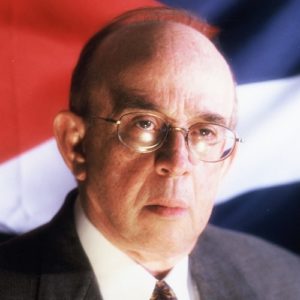After “Las Guásimas,” the American and Cuban forces advanced toward Santiago’s outer defenses and prepared for an attack. On July 1, American General William Shafter decided on a two-prong assault, directed at San Juan Hill and the village of El Caney, which was defended by 520 men under the command of Spanish General Joaquin Vara del Rey. General Henry Lawton’s division, over 5,000 strong, was ordered to take control of the fortified village. It was assumed that the task could be completed within two hours.
El Caney was a small village arranged around a central park and stone church. It was defended by six heavy timber blockhouses (small forts), and the stoutly built stone fort “El Viso” that combined with the church and connected by trenches and barbed wires, became a solid defensive position.
The attack began at 6:30 a.m. with an opening barrage of artillery (four 3.2-inch field guns). Their shots were ineffective. The range was too far for such light guns. At 7:00 am. The American-Cuban infantry opened fire. The Spanish replied with their excellent Mauser rifles and a ferocious fight developed. From the first shots, it was apparent that El Caney was not going to be taken easily. The battle soon became a bloody match.
General Vara del Rey seemed to be everywhere. His sense of duty was tested when scheduled to return to Spain, due to illness, he voluntarily requested to remain in Cuba when the war with the U.S. broke out. Both sides displayed uncommon valor. Vara del Rey, his two sons and several hundred officers and soldiers died a hero’s death. Their determination to stand their ground greatly impressed the Americans; but, in spite of their valiant efforts, by nightfall, the American-Cuban forces captured El Caney.
The attack on San Juan Hill began around eleven o’clock in the morning after a delay, waiting for Lawton’s division still fighting at El Caney. Moving along the narrow trails, Generals Jacob Kent and Samuel Summers and the Cuban forces of Colonel Gonzalez Clavel began to approach the Spanish strongholds at San Juan and Kettle Hills (La Loma de la Caldera). Although not very high, the two hills dominated the most practical approach of attack to the city from the east. The Spanish commander of Santiago, General Arsenio Linares, integrated the two heights into one defense system with trenches and entanglements, supported by a few light cannons. History recorded the name of the whole Spanish defense lines as “San Juan Hill.”
As the American and Cuban soldiers approached the fortified hills, they began losing coverage of the dense vegetation and from their trenches, the Spanish poured their firepower, inflicting heavy casualties on the advancing forces. The attack bogged down. For the most part, U.S. artillery was ineffective and out of range. In the early afternoon, the fight was turning ugly. Heavily engaged, all along their line, it became obvious that decisive action was urgent.
Teddy Roosevelt, one of the few officers, mounted on a horse (his beloved “Little Texas”) was with the “Rough Riders” regiment just in front of Kettle Hill when the order for a frontal assault was finally given. (The U.S. cavalry was fighting as infantry). The men jumped forward and charged up the Hill yelling and shouting. The black troopers of the ninth and tenth regiments joined in the attack. The future commanding General of WWI, John Pershing, was among the white officers leading the Afro American regiments charging the Spanish trenches. Kettle Hill was captured after a fierce and courageous fight. Immediately these forces with Teddy Roosevelt in the vanguard joined the attack to nearby San Juan Hill. Here, General Kent’s division and the Cubans led by Gonzalez Clavel were charging the Spanish blockhouse and trenches. The U.S. artillery was rushed forward and shelled San Juan Hill, but it was Lieutenant John H. Parker, focusing the devastating fire of three Gatling machineguns, that broke the Spanish stiff resistance. As the assault gained momentum, General H.S. Hawkins with his erect figure and white hair, made an inspiring presence, swinging his hat and calling out “come on, come on.” After a furious fight, the block house at the top of the hill was captured and the surviving Spaniards retreated towards Santiago. The city was encircled, and the water supply cut off.
The following day, Shafter received the casualty report and called a meeting of his senior commanders. General William Shafter was an insecure commander, a Civil War veteran who spent most of his military career fighting Indians in the West. He weighed over 300 pounds, suffered from gouty arthritis and on many occasions had to be carried atop a wooded door by six soldiers. Shafter spent long hours gasping from the heat and humidity of the tropics. The commanding General of the U.S. army in Cuba was a pitiful sight.
At the meeting, Shafter put forward the idea of abandoning San Juan and El Caney and retreating five miles back to high ground between San Juan River and Siboney beach His top commanders did not agree, and Washington rejected the idea of falling back. The soldiers dug in and waited for the fight soon to come.
With Santiago completely encircled by the U.S. and Cuban forces and the looming probability of falling in enemy hands, Admiral Cervera’s fleet anchored in the harbor became a top priority issue in Madrid. What to do with the fleet? Should it be surrendered without a fight? With the honor of Spain at stake, the answers were soon to come.
*Pedro Roig is Executive Director of the Cuban Studies Institute. Roig is an attorney and historian that has written several books, including the Death of a Dream: A History of Cuba. He is a veteran of the Brigade 2506.









